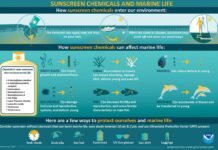Not surprisingly, water issues have seeped into the biofuel debate. For almost a decade, HC&S has been locked in disputes with taro farmers and environmentalists over the hundreds of millions of gallons the company diverts from Central and East Maui streams to irrigate cane fields. Guinea grass and sweet sorghum require less water than sugarcane, so there’s hope—though no guarantee—that the biofuel crops that prove most feasible would be less thirsty.
Hawai‘i has an equally urgent imperative to reduce its dependence on imported food. Given the potential competition for agricultural land, why not concentrate solely on wind and solar power to meet the state’s energy needs?
“Wind and solar are viable, but intermittent,” says Hashimoto. “And wind and solar, at least at this point, are very difficult to convert into transportation fuels. Energy crops, ocean currents, geothermal, solar, wind . . . we’ll have to look at a lot of difference sources of energy to reduce our dependence on imported oil.”
Hawaiian Electric is already looking. The company partnered with Blue Earth Biofuels to create biodiesel from “sustainable” Malaysian palm oil for use in Maui Electric’s Ma‘alaea power plant. The deal fell apart over financing issues, but not before churning up controversy among environmental groups, who protested that palm-oil plantations in Indonesia and Brazil have burned rainforests and released huge amounts of greenhouse gasses.
Of course, any imported biofuel will by definition be more environmentally costly than one that’s homegrown. Hawaiian Electric is currently reviewing proposals from close to a dozen companies to provide biofuels made from feedstocks produced and processed within the state. Spokesman Peter Rosegg says HECO will also evaluate those proposals to see how well they meet environmental guidelines developed in partnership with the Natural Resources Defense Council.
Whether or not biofuels make sense for Maui, CTAHR’s Andrew Hashimoto expects to see much of the Central Valley remain in agriculture. “It could be energy crops. It could be sugar, if prices remain high. It could be pasture, or smaller farms that grow different crops on leased lands. It’s not ‘sugar or nothing,’ but it would be a challenge to find the right mix on [HC&S’s] 35,000 acres.”
HC&S’s Lee Jakeway concurs. “We’re committed to keeping the Central Valley green. We give up development rights to do so. We want to keep the land in agriculture.





